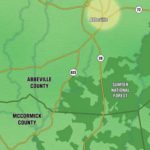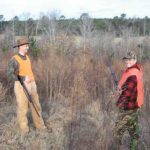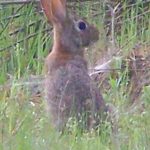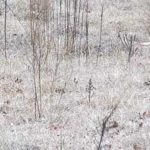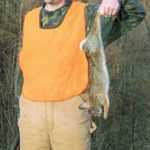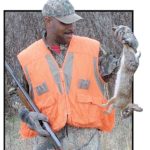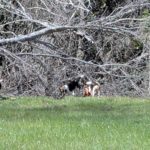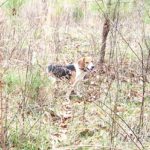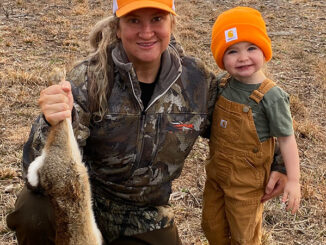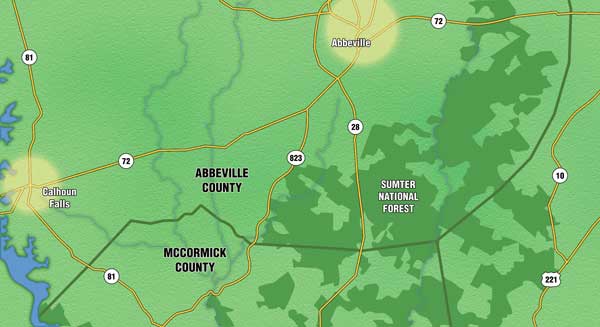
Take these tips into the field, and you’ll end up with a bulging game bag. But you’d better stock up on biscuits first.
“Hunt in here” — the mantra of the dog handler — rings across the frosted hillsides as the sun begins to peak over the east side of Abbeville County.
The beagles are antsy from the drive to the farm, but from the active wagging of tails working through the broomstraw, it’s obvious they know bunnies are afoot.
As the pack breaks into a trot, the huntmaster — Jay Gambrell of Powdersville — encourages his band of hunters not to let the dogs get too far out.
Gambrell has been hunting the family farm in Calhoun Falls since he was old enough to walk. He knows that when rabbits jump from one of the many briar patches or brushpiles scattered on this particular hillside, they won’t have to run far before they’re in another protected area, safe from the hunters and the dogs — at least for the time being.
As soon as the dogs strike, hunters flank the perimeter of a dense brushpile intersected by a washout ditch. As the pitch of the trailing dogs’ barking gets higher, Hardy Paschal caps the race with a report from his 12-gauge Browning automatic shotgun, and the first rabbit of the day comes to hand.
Paschal is a rabbit-hunting veteran; he had his eye on a cut in the ditch that looked to be well used as a side exit, and he was right. Congratulated by the group for a fine shot, he is all smiles.
“Fried rabbit and rabbit gravy with biscuits!” exclaims Paschal, whose briar-shredded field jacket bears proof that he knows his way around a rabbit hole.
Rabbit hunting is as richly steeped in tradition as any shooting sport, and like all hunting sports, it has changed as time and the landscape has evolved. Most of the land across rural Abbeville County and surrounding areas in the Piedmont was once dominated by hardwood trees and communities of family farms. Rabbits and good habitat were plentiful, but as farms died out and people began moving toward the cities, the land was converted mostly to pine plantations.
By the early- to mid-1980s, timber and paper companies were utilizing the land to meet growing needs for lumber and paper. Unlike deer, which readily adapted to the land use and habitat changes, rabbits suffered, but the sport has carried on.
Fortunately for Gambrell, his family farm has stayed in the family, and he has learned rabbit hunting in this new era. While some of his tactics follow time-tested tradition, some were crafted along the way because they worked.
“I once heard a little saying about rabbit hunting that makes a lot of sense: no habitat, no rabbits — know habitat, know rabbits,” he said. “Knowing habitat fills in a lot of blanks of how I’m going to hunt.”
Gambrell said that he determines which gun to shoot, what load to shoot, where the rabbits will be, what they’ll eat, and most important, how to intercept them — all by the habitat they’re using.
“The farm we hunt is a lot different from the areas most hunters hunt,” he said. “Since we own the land, we determine everything about it: whether trees are cut, crops are planted, land is cleared. Club hunters who lease land or hunt public land don’t have that kind of control.”
Billy Dukes is the Small Game Project Supervisor with the S.C. Department of Natural Resources office in Columbia; he concurs with Gambrell’s assessment about habitat.
“Most hunters don’t complain about a lack of rabbits, they complain about a lack of habitat,” he said.
Hunters who are looking to hunt rabbits need to target open ground that has been allowed to grow up. It’s not difficult to determine whether that type of habitat is available throughout the Piedmont; Duke’s suggestion was to pay attention to the harvest cycle of trees on the property.
“Many available lands are high-canopy pine plantations, and if an entire club is same-year pines, then the rabbit population will be pretty scarce due to the mature trees choking out the ground-level cover,” he said. “On the other hand, if the land is a mix of clear-cuts, young pines and mature pines, I suggest looking at the clear-cut areas that have been cut within the last four or five years.”
Open ground exposed to sunlight will quickly overgrow with briar patches, cane or other forms of ground cover. Many pine tracts have been cut over the past few years to deter the spread of pine beetles, and the leftover brush piles are havens for rabbits.
“The best thing hunters can do to attract rabbits is create habitat, even better than planting food plots,” Dukes said. “The prettiest stand of clover in the world won’t hold them if they don’t have protection.”
By the end of the afternoon, a day’s worth of running and gunning for rabbits with Gambrell had more than just the dogs looking for some rest. Feeling ragged on the inside and looking ragged on the outside from wading through chest high briar patches, the band of hunters collected the dogs and made its way back to the truck.
Looking forward to some hot grease, flour and cornmeal, Jay Gambrell gave his final piece of rabbit hunting advice: “Make sure you’re stocked up on biscuits.”

